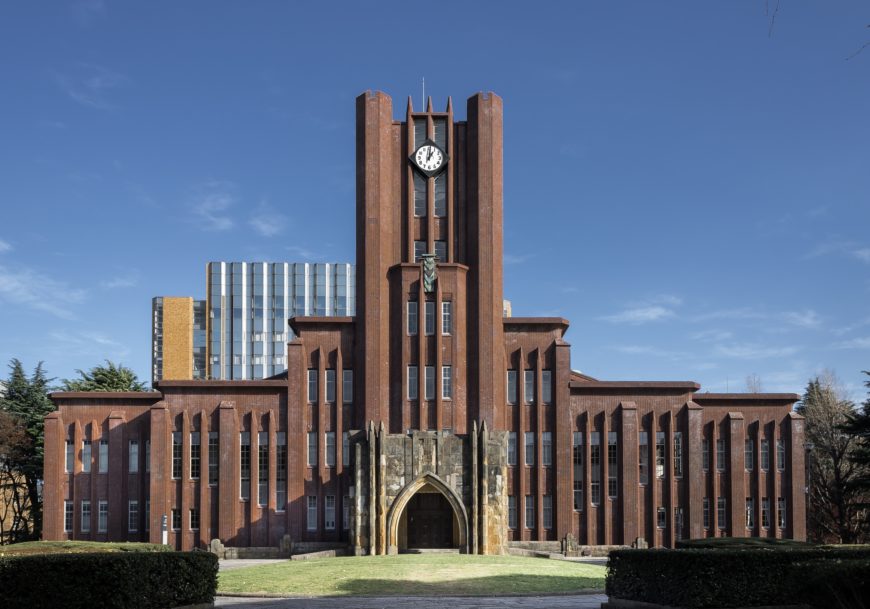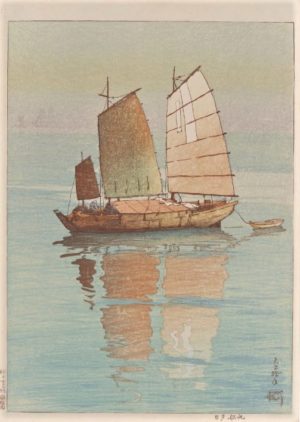Taishō period (1912–1926)
The Taishō period continued the process of adoption and transformation of foreign models. During this period Japan participated in World War I and continued its colonial rule of Korea and Taiwan, occupations dating from the Meiji period. In the cultural field, the eclectic style that had emerged in architecture continued to flourish, with structures emulating modernist trends like Bauhaus and Art Deco. The Great Kantō earthquake of 1923, a natural disaster of catastrophic proportions, not only destroyed buildings and other cultural properties, but marked a shift in Japanese society from the optimism of the Taishō period to the radicalized nationalism of subsequent decades.

Yasuda Auditorium, architect: Uchida Yoshikazu, patron: Yasuda Zenjiro, built 1925, renovated after 1968 (image: Kakidai CC BY-SA 4.0)
The Yasuda Auditorium, built in 1925 on the campus of the University of Tokyo, epitomizes the brief but consequential Taishō period. Designed in an Art Deco mode and reminiscent of the campus of the University of Cambridge, the Yasuda auditorium was sponsored by one of the founders of the Yasuda zaibatsu. It was intended as a temporary resting facility for the emperor when he visited the university. As such, the auditorium embodied the socio-cultural influence of the new financial magnates, the rising nationalism concentrated in the persona of the emperor, the adoption of the European Art-Deco architectural style, and the affirmation of the university as a modern research center.

Yoshida Hiroshi, Sailing Boats: Evening Glow, 1921, shin hanga, woodblock print, ink and colors on paper (Arthur M. Sackler Gallery, Robert O. Muller Collection)
Nihonga, or (modern) Japanese painting, continued to develop at the intersection of Japanese tradition, western techniques, and individual styles. The Nihonga painter Yokoyama Taikan resurrected the Nihon Bijutsuin (Japan Art Institute) after it had lapsed following the death of its leader, the controversial but influential thinker Okakura Kakuzō. Such developments ensured a continuation of Meiji-period discourses on the arts, entailing the adoption of western notions and terms and the formulation and crystallization of new concepts, all reflected in newly coined Japanese-language words.
An equivalent to Nihonga was the shin hanga phenomenon, namely the formation of new modes and styles of printmaking that simultaneously revitalized ukiyo-e (as defined in the section on Edo-period arts) and incorporated elements of modern design and western-inspired realism. While shin hanga largely preserved the multiple hands traditionally involved in the design and production of ukiyo-e woodblock prints, another mode of Japanese printmaking that emerged in the 1910s, known as sōsaku hanga, emphasized individual expression and featured a sole creator in charge of all aspects of the print’s production (from drawing to carving to printing). Sōsaku hanga resonated and drew upon contemporaneous thinkers and writers like Natsume Sōseki who advocated self-expression.




